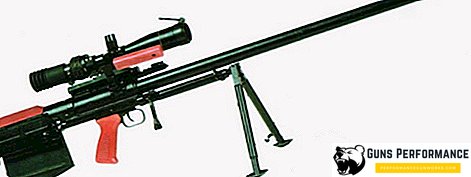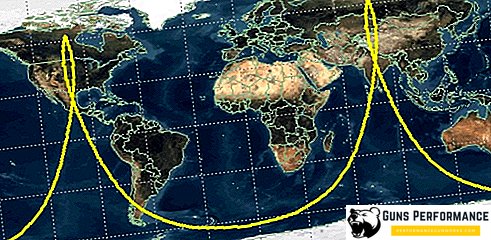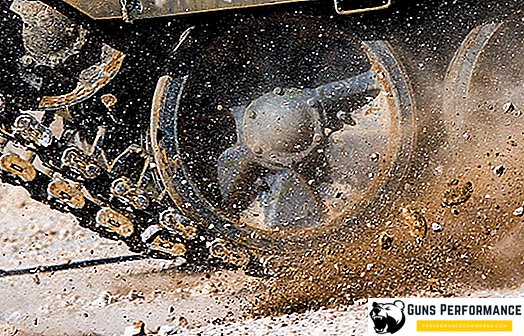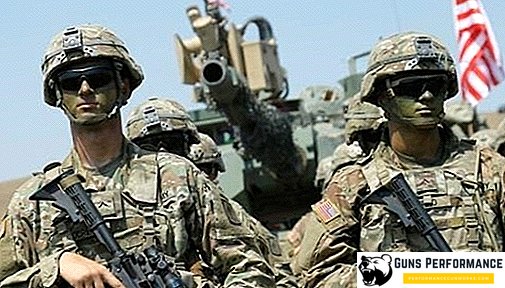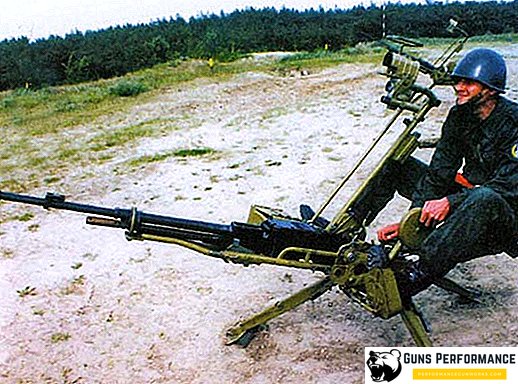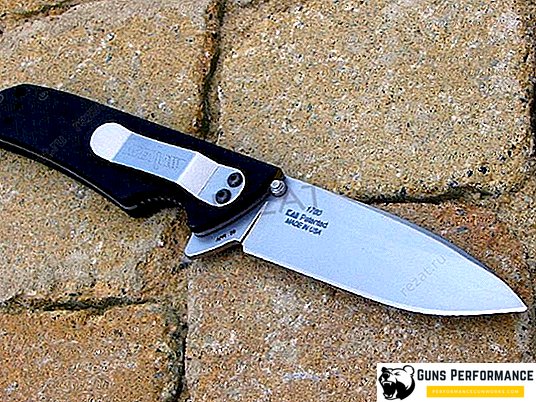
The MiG-21 is a Soviet fighter developed in the late 1950s and in service with the Soviet Air Force until 1986. The MiG-21 is the most massive supersonic fighter; over the years of its operation, it has been repeatedly upgraded, four generations of this aircraft are allocated.
The MiG-21 fighter took part in almost all the major conflicts of the second half of the last century; the first serious test for this combat vehicle was the war in Vietnam. For the characteristic shape of the wings, the Soviet pilots jokingly called the MiG-21 “balalaika”, and the NATO pilots called the “flying Kalashnikov”.
In the American Museum of Aviation and Astronautics opposite to each other there are two combat aircraft: the F-4 Phantom and the MiG-21 are irreconcilable opponents, whose confrontation lasted for several decades.
A total of 11,500 units of the MiG-21 fighter were manufactured in the USSR, India and Czechoslovakia. In addition, in China for the needs of the PLA, a copy of the fighter was produced under the designation J-7, and the export Chinese version of the aircraft is called F7. It is released today. Due to the huge number of copies, the cost of one aircraft was very low: the MiG-21MF was cheaper than the BMP-1.
The MiG-21 should be attributed to the third generation of fighters, because it had a supersonic flight speed, mainly rocket armament, could be used to solve various combat missions.
In the USSR, mass production of the MiG-21 was discontinued in 1985. In addition to the USSR, the fighter was in service with the air forces of all the Warsaw Pact countries and was supplied to practically many Soviet allies. Today it is quite actively exploited: the MiG-21 is in service with several dozen armies in the world, mainly from Africa and Asia. So this car can be called not only the most massive, but also the most long-lived among fighters. Its principal adversary - the F-4 Phantom is currently in service with only the Iranian Air Force.

History of creation
Back in the early 50s, the Mikoyan Design Bureau began the development of a light front-line fighter, capable of both intercepting enemy high-altitude speed bombers and fighting enemy fighters.
While working on the new aircraft, the experience of operating the MiG-15 fighter and its combat use in the Korean War was taken into account. The military believed that the time of maneuvering battles was in the past, now the opponents will approach at great speeds and hit enemy aircraft with one or two missiles or a single cannon volley. A similar opinion was shared by Western military theorists. Work on aircraft with similar to the MiG-21 characteristics were carried out in the United States and Europe.
Supervised the creation of a new machine, A. G. Brunov, initially being in the status of deputy general designer of the OKB. Later, by order of the Ministry of Aviation Industry, he was appointed chief designer for the creation of fighters.
Work went in parallel in two directions. In 1955, a prototype of a fighter with an arrow-shaped (57 ° along the leading edge) E-2 wing went up in the air; he was able to reach a speed of 1920 km / h. The following year, the first flight of the E-4 prototype took place, the wing of which had a triangular shape. In the course of the subsequent work, flights of other prototypes of the fighter with a swept and delta wing were carried out.

Comparative tests have shown significant advantages of an aircraft with a triangular wing shape. In 1958, three E-6s were manufactured with the new R-11F-300 engine, equipped with an afterburner. One of these three machines became the prototype of the future MiG-21 fighter. This aircraft was distinguished by an improved aerodynamic shape of the nose, new brake flaps, a keel with a larger area and a modified design of the cockpit canopy.
It was this aircraft that was decided to be launched into further mass production and assigned the designation MiG-21. It was planned to establish a parallel production of a fighter with a swept wing (under the designation MiG-23), but these plans were soon abandoned.
Serial production of the fighter in 1959-1960. was carried out at the Gorky aircraft factory. Later, the release of the aircraft was adjusted to the MMP "Znamya" and the Tbilisi aircraft plant. The production of the fighter was stopped in 1985, during which more than forty experimental and serial modifications of the aircraft appeared.
Description of construction
It should be noted that the mass production of the MiG-21 lasted for more than twenty-five years, during this time dozens of modifications of the fighter were launched. The machine is constantly being improved. Fighters of the latest modifications are very different from the aircraft of the first years of release.

The MiG-21 fighter has a normal aerodynamic configuration with a low-lying triangular wing and a plumage with a high sweep. The fuselage of the aircraft is of the semi-monocoque type with four longitudinal spars.
The design of the fighter is completely made of metal, in its manufacture used aluminum and magnesium alloys. The main type of connection of structural elements is rivets.
In the bow is a round adjustable air intake with a solid cone. It is divided into two channels that surround the cockpit and re-forming a single channel after it. In the nose of the fighter there are anti-surge flaps, in front of the cabin there is a compartment of electronic equipment, under it is a landing gear niche. In the tail of the aircraft is a container with a brake parachute.
The wing of the MiG-21 fighter has a triangular shape, it consists of two consoles with one spar. Each of them has two fuel tanks and a system of ribs and stringers. Each wing has ailerons and flaps. Each wing has aerodynamic ridges that increase the stability of the aircraft at high angles of attack. At the root ends of the wing are also oxygen cylinders.
The horizontal plumage is a full turn, with a sweep of 55 degrees. Vertical tail has a sweep of 60 degrees and consists of a keel and steering wheel. Under the fuselage mounted crest to increase stability in flight.
Fighter MiG-21 has a tricycle landing gear, consisting of the front and main racks. Release and cleaning of the chassis is made using a hydraulic system. All wheels are chassis brakes.
The MiG-21 cockpit has a streamlined, drop-shaped lantern, it is completely sealed. The air in the cabin is supplied by a compressor, the temperature in the cabin is maintained by a thermostat.
The lantern of the aircraft consists of a visor and a hinged part. The front part of the visor consists of silicate glass, under which there is a 62-mm bulletproof glass that protects the pilot from fragments and shells. The folding part of the lantern is made of organic glass, it opens manually to the right.

To eliminate the icing, the lantern was supplied with an anti-icing system, which sprayed ethyl alcohol onto the front glass.
The first modification of the MiG-21F, launched in 1959, was equipped with an R-11F-300 engine. In later versions, there were other engines (for example, R11F2S-300 or R13F-300) with more advanced characteristics. The R-11F-300 is a twin-shaft turbojet engine (TRDF) with a six-speed compressor, an afterburner and a tubular combustion chamber. It is located at the rear of the aircraft. TRDF has a control system PURT-1F, which allows the pilot to regulate the engine from a full stop to the afterburner mode with one lever in the cockpit.
The engine is also equipped with an electric start system, an oxygen make-up system for the motor, an electro-hydraulic nozzle control system.
The air intake of the aircraft is adjustable, in its front part there is a movable cone made of radio transparent material. It contains the radar fighter (in the early versions - the radio range finder). The cone has three positions: for a flight speed of less than 1.5 M, it is fully retracted, for a speed from 1.5 to 1.9 M, it is in an intermediate position and for a flight speed of more than 1.9 M, it is maximally extended.
In flight, the engine compartment is flushed with air to protect the design of the fighter from excessive heat.
The MiG-21 fuel system consists of 12 or 13 fuel tanks (depending on the aircraft modification). Five soft tanks are located in the fuselage of the fighter, four more tanks are in the wing of the aircraft. Also, the fuel system includes fuel lines, numerous pumps, tank drainage systems and other elements.
Fighter MiG-21 is equipped with a system that allows the pilot to urgently leave the aircraft. On the first modifications of the MiG-21, an ejection seat was installed, similar to that of MiG-19 aircraft. Then the fighter was equipped with an ejector seat "SK", which with the help of a flashlight protected the pilot from the air flow. However, such a system was unreliable and could not provide for the rescue of the pilot during the ejection from the ground. Therefore, later it was replaced by a chair KM-1, which had a traditional design.
MiG-21 has two hydraulic systems, the main and booster. With their help, the chassis, brake flaps, flaps, and the engine nozzle and air intake cone are released and cleaned. Also, the aircraft is equipped with a fire system.
The MiG-21 was equipped with the following types of instrument and radio-electronic equipment: artificial horizon, fighter heading system, radio compass, radio altimeter, radiation warning station. In the early modifications of the aircraft there was no autopilot, it was later installed.
The armament of the MiG-21 fighter consisted of one or two built-in guns (NR-30 or GSh-23L) and various types of missile and bomb weapons. The fighter has five suspension points, the total weight of the suspension elements is 1300 kg. Aircraft missile weapons are represented by different types of air-to-surface and air-to-air missiles. Uncontrollable 57 and 240 mm rockets and incendiary tanks can also be installed.
The fighter can be installed equipment for conducting aerial reconnaissance.

Modifications
Over the long years of operation, the MiG-21 has been repeatedly upgraded. If we talk about the latest modifications of the fighter, they are very different in their technical characteristics from the aircraft, released in the early 60s. Specialists divide all modifications of the fighter into four generations.
First generation. This includes front-line fighters MiG-21F and MiG-21F-13, released respectively in 1959 and 1960. Armament MiG-21F consisted of two 30-mm cannons, unguided rockets and S-24 missiles. The fighters of the first generation did not have radars. The MiG-21F-13 was equipped with an engine with higher performance, the plane could reach speeds of 2499 km / h, this modification set a record for the height of flight.
Second generation The second generation of fighter aircraft includes modifications of the MiG-21P (1960), MiG-21PF (1961), MiG-21PFS (1963), MiG-21FL (1964), MiG-21PFM (1964) and MiG-21R (1965).
All fighters of the second generation were equipped with radars, engines with higher performance, and the weapons system was also changed.
On the MiG-21P cannon armament was completely removed, since at that time it was considered that there were enough missiles for the fighter. Similarly, the American Phantom was armed. The Vietnam War showed that such a decision was a serious mistake. On the modification of the MiG-21PFM they decided to return the gun - on the fighter it is possible to install the gun container on the central pylon. Also this aircraft was armed with RS-2US radar-guided missiles, for their installation it was necessary to remake the on-board radar.
The MiG-21PFS version was equipped with a system for deflating the boundary layer with flaps, which made it possible to significantly reduce the landing speed of the fighter and reduce its path length to 480 meters.
MiG-21FL. Modification created for the Indian Air Force.
MiG-21R. The reconnaissance aircraft, containers with special equipment were installed under its fuselage.

Third generation The appearance of this generation of fighters is associated with the creation of the new RP-22 radar "Sapphire-21" (C-21). It had higher characteristics than the previous RP-21 station, and could detect bomber targets at distances of up to 30 km. Thanks to the new radar, the fighter’s missiles were equipped with semi-active homing heads. Previously, the pilot had to direct the missile at the target until its defeat. Now it was enough to highlight the target, and the rocket performed the maneuvers on its own. This completely changed the tactics of using the fighter.
The third generation of the fighter includes modifications of the MiG-21S (1965), MiG-21M (1968), MiG-21SM (1968), MiG-21MF (1969), MiG-21SMT (1971) , MiG-21MT (1971).
Two infrared-guided missiles and two with radar heads were the typical rocket armament of third-generation MiG-21 fighters.
MiG-21M. The export version of the fighter, it was manufactured under license in India.
The MiG-21SM received a new, more sophisticated R-13-300 engine and the GSh-23L automatic cannon built into the fuselage. The experience of the Vietnam War showed that cannon armament is not auxiliary, it is necessary for a fighter in every battle.
MiG-21MF. Export modification of the MiG-21SM.
MiG-21SMT. Modification with a more powerful engine and an increased volume of fuel tanks. Used as a carrier of nuclear weapons.
MiG-21MT. This is a variant of the MiG-21SMT fighter, which was developed for export, but later these aircraft were transferred to the Soviet Air Force. A total of 15 units of this modification were manufactured.
Fourth generation This generation of the fighter belongs to the MiG-21bis - the most recent and perfect modification of the aircraft. It was released in 1972. The main "highlight" of this modification was the engine P-25-300, which developed the thrust through the boost and 780 kgf. On the plane was found the optimal ratio between the capacity of the fuel tanks and aerodynamic properties. MiG-21bis was equipped with a more sophisticated radar "Sapphire-21" and improved optical sight, allowing the pilot to shoot even with large overloads.
The fourth generation aircraft received more advanced R-13M infrared-head missiles and R-60 melee rockets. The number of guided missiles on board the MiG-21bis increased to six.
A total of 2013 units of this modification of the fighter were released.

Combat use
The combat use of the MiG-21 fighter began in 1966 in Vietnam. The small, maneuverable, high-speed MiG-21 became a very serious problem for the newest American F-4 Phantom II fighter. During the six months of air combat, the US Air Force lost 47 aircraft, managing to shoot down only 12 MiGs.
The Soviet fighter surpassed his opponent in many ways: he had better maneuverability on turns, had excellent thrust-weight, was more manageable. Although the Soviet radar and missile weapons were frankly weaker than the Americans. But despite this, the Vietnamese pilots on the MiGs still won the first round of combat.
Americans for their pilots were forced to start courses of combat tactics against the MiG.
During the Vietnam conflict, 70 MiG-21 fighters were lost, they made 1300 sorties and scored 165 victories. It should be noted that the numbers differ from different sources. However, the indisputable fact is that in that war the American F-4 Phantom lost to the Soviet fighter.

By the way, Hollywood has not released a single film dedicated to American pilots in Vietnam, because in this war there was nothing much to be proud of.
The next serious military conflict in which MiG-21 took part was the war between India and Pakistan in 1971. At that time, various modifications of the MiG-21 were the basis of the fighter aircraft of the Indian Air Force. They were opposed by the Chinese fighter J-6 (modification of the MiG-19), the French Mirage III and the F-104 Starfighter.
According to the Indian side, 45 aircraft were lost during the conflict and 94 enemy aircraft were destroyed.
In 1973, another Arab-Israeli conflict began, which was called the Doomsday War. In this conflict, the MiGs of various modifications of the Syrian and Egyptian air forces were opposed by Israeli pilots on the Mirage III and F-4E Phantom II aircraft.
A particularly dangerous opponent was the Mirage III. In many ways, they were very similar. The MiG had a slightly better maneuverability, but was inferior to the enemy in radar performance and had the worst visibility from the cockpit.
The Doomsday War forced the pilots to recall such a tactical device as the closest group air battle. He has not been practiced since World War II.
During the campaign, Syrian fighters conducted 260 battles and shot down 105 enemy aircraft. Their losses were estimated at 57 aircraft.

МиГ-21 принимал участие во время войны между Ливией и Египтом, его активно использовали в ирано-иракской войне, а также в ходе ряда других локальных конфликтов.
Этот истребитель применялся советскими войсками в Афганистане. После ухода советских войск из этой страны часть самолетов попала к моджахедам. Они участвовали в нескольких воздушных боях с самолетами Северного Альянса.
После появления машин четвертого поколения МиГ-21 начал терять свое превосходство в воздухе. Во время воздушных боев над Ливаном в 1979-1982 гг. израильские F-15A существенно превосходили МиГ по большинству характеристик. ВВС Ирака безрезультатно пытались использовать МиГ-21 против авиации многонациональных сил в Ираке в 1991 году.
МиГ-21 и сегодня стоит на вооружении десятков стран мира, в основном Африки и Азии. Так, например, его продолжают активно использовать сирийские правительственные силы. С начала этого конфликта ВВС Сирии потеряли 17 МиГ-21. Часть из них были сбиты, а другая - потеряны из-за технических неисправностей.

Specifications
| Тип | МиГ-21Ф-13 |
| Weight, kg | 890 |
| Стартовая масса, кг | 7370-8625 |
| Max. скорость на высоте, км/ч | 2125 |
| Посадочная скорость, км/ч | 260-270 |
| Ceiling, m | 19 000 |
| Радиус полета, км | 1300 |
| Радиус полета с подвесными баками, км | 1580 |
| Продолжительность полета | 1 ч 37 мин до 1 ч 56 мин |
| Engine | З11Ф-300 |
| Armament | Пушка 1НР-30 / 2К-13 или 2×16 ракет или 2 бомбы |


